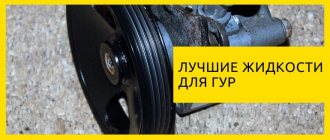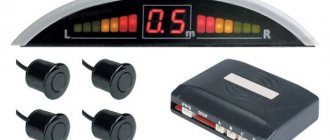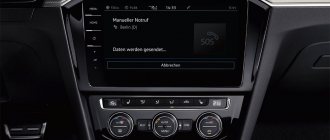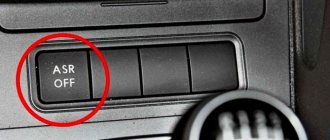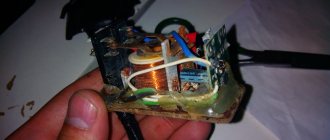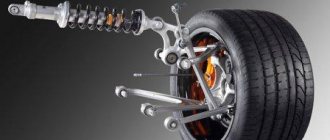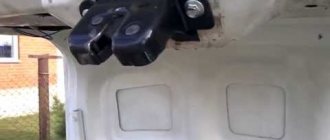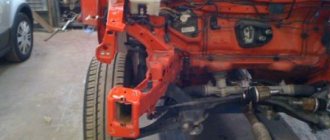On-board equipment
In foreign-made cars, this unit is called ECU. A similar controller is installed with different types of engines, both gasoline units and diesel power plants. During operation, this unit interacts with various sensors that record current information about the current parameters of the car.
When determining the functionality of the engine ECU, what it is and how it is involved in processes, it is worth considering that the unit processes the received parameters using the existing algorithm. Based on the available operating values of the motor, the ECU sends appropriate commands to the actuators installed in the power unit.
In fact, the car is equipped with an on-board network. What is an ECU in a car? In fact, this is the main element of this network. Sometimes such electronics are not unreasonably called the main computer in a passenger car. A more slang name is the word "brains".
Controllers are located not only in the internal combustion engine, but also in other systems of the machine. For example, they can be found in the following modules:
- automatic gearbox;
- anti-lock braking system (ABS);
- airbag control;
- exchange rate stability systems (ESP, ESV, VSC, etc.);
- climate control unit, etc.
Each system has a personal management unit. They are all connected.
The main one among the variety of electronics is the engine control unit. Its tasks include continuous processing and exchange of current parameters with other systems. For communication, a special cable is used - CAN bus. Thus, all elements are combined into a single digital system - the on-board network.
Thanks to the mutual two-way communication of all links included in the on-board network, optimization of the operation of the power plant is ensured.
When determining what an ECU is in the car where it is located, it is necessary to take into account that thanks to its operation it is possible to achieve the following comfortable indicators:
- fuel consumption is optimized;
- injection into the cylinders is adjusted in a timely manner;
- During intake, a sufficient volume of air for the fuel mixture is automatically selected.
The performance of the host computer affects the vehicle's power, the value of torque in different operating modes, as well as other important output characteristics. In such a situation, the module must always be operational.
Malfunctions and their causes
Troubleshooting the ECM can begin after detecting a number of symptoms. First, when the ignition is turned on, all the system indicator lights should light up simultaneously, thus the system checks its diagnostic mechanism. After starting the engine, everything should go out at the same time. If any of them lights up while driving, this indicates problems in the internal combustion engine. At best, the system can shut down the engine to avoid serious damage. The list of negative situations in which the ECM malfunctions is long - the cooling system may become airless, the heater or thermostat may not work.
IMPORTANT! The ECM is a delicate system, so describing problems that can happen with the electronics can take a lot of time.
The main causes of malfunctions are:
- Failure of sensors sending data to the ECM.
- Failures in the control unit itself.
- Failures of the control system actuators (increase in resistance, break in the winding of the solenoid valve, etc.).
- Damage to electrical wiring.
- Intervention by outsiders in the design of electronic systems, which could result in a violation of their integrity.
Often the ECM breaks down due to mechanical damage. This may not necessarily be a shock; a strong vibration is enough to cause harm to the system. Next in terms of the percentage probability of damage to the ECM are: sudden temperature changes, corrosion, moisture ingress under the protective casing due to depressurization of the device. Also, the correct operation of the system is often disrupted due to incompetent interference in its functioning.
System repairs can only be trusted to specialists.
Tasks assigned to the ECU
Car manufacturers assign the following tasks to the control unit:
- ignition control;
- throttle position control;
- monitoring and adjustment of valve timing;
- management and implementation of control functions over the phases of fuel injection;
- monitoring the thermal state of the power plant and its cooling system;
- control of the exhaust gas system.
Information from sensors from the crankshaft about its rotation frequency is transmitted to the “brains”. In this case, the current speed limit of the car, the voltage value of the entire control network, etc. are taken into account.
How does the engine control unit work and where is it located?
The block is, in most cases, an electronic microcircuit densely loaded with elements. It is hidden under a plastic or metal case to protect it well from negative external influences. Quite often the board is mounted in the engine compartment, closer to the center console. You can find out the actual location of the unit from the car manual.
The main elements of the head module are a microprocessor and memory units. Two or more output connectors are required for communication. They are easy to find on the outside for easy connection. One of them must be used to interface with the vehicle’s on-board network. Another one is diagnostic. It is through it that the connection with external scanning devices occurs.
The main panel has several memory options to take full advantage of the hardware's capabilities. The permanent type of memory contains the main programs and algorithms for the current operation of the power plant. The entire software package is built in at the factory.
There is a separate module with RAM. With its help, the system is able to dynamically process current information that comes from different sensors. At the same time, some results are stored for a short time. A separate memory module provides storage of the following important parameters:
- the total time interval of operation of a given engine;
- total mileage traveled by the vehicle;
- total volume of fuel consumed;
- various access codes;
- error or blocking codes.
Some data from such a module can be corrected, for example, the ECU error code is reset.
Electronic unit software
There are two types of software: control and functional. The first one monitors pulses from sensors installed in different places. All accepted parameters must be within the acceptable ranges of values established by the manufacturer. If a small deviation from the specified range is detected, the device’s performance is updated.
The task of the functional module is to receive and process data. It also sends certain signals to executive systems.
It is important to know that when control systems detect significant deviations from established standards, the electronic unit is capable of completely blocking the operation of the power plant.
In some cases, car owners seek to improve the performance of the ECU or restore software after some failures. For such cases, the electronics are re-flashed. During work, the standard software can be replaced with third-party, adjusted ones. This technique is called “chip tuning”.
Repair, replacement
It’s hard to say whether to repair the ECU or replace it. Sometimes the controller burns out completely, so much so that it can no longer be repaired. A new unit needs to be installed. And this is not so cheap - the average price is from 15 to 40 thousand rubles.
But if the error can be eliminated by replacing one or two microcircuits, then repair is advisable. If a track on the board has been eaten away by corrosion, this can also be restored.
Popular car electronic computer malfunctions
Traditionally, the ECU is a fairly reliable device in modern cars. However, depending on the quality of operation of the car or external factors, the system may malfunction. Popular reasons for the failure of such electronics are the following factors:
- significant heating of the device;
- a short circuit has occurred in the system;
- penetration of moisture into the device body, connectors or exposed areas;
- external mechanical damage to equipment;
- emerging corrosion processes.
Various characteristics help to indirectly identify malfunctions in the operation of electronics, for example, the motor fails even though the sensors and other power plant systems are absolutely functional. Proper operation directly depends on the quality of voltage in the entire on-board system of the vehicle.
Failure of a car computer leads to unstable operation and failures in different modes of the internal combustion engine. Sometimes such an event is characterized by a complete blocking of the power plant. In this case, a “check” lights up on the instrument panel. It will not be possible to simply reset such an error, and if this happens, the cause of the problem will not disappear, and the corresponding indicator will soon appear again.
In such a situation, it is necessary to diagnose the condition of the ECU. We recommend completely replacing the failed board. It is believed that you can carry out independent repairs of the microcircuit, which will cost less than installing a new product. However, careful monitoring of performance and elimination of all possible faults is required, which is not always available to car enthusiasts.
In automotive electronics, electronic control unit
(
ECU
) is a general term for any embedded systems that control one or more electrical systems or subsystems in a vehicle.
- ECM (electronic engine management system).
- ECM (Engine Control Module) - engine control module.
- ECU (Electronic Control Unit) - electronic control unit, is a general term for any electronic control unit. (See clause 3.9. SAE J1979[1].)
ECU types are divided into Electronic (ECU) / Engine Control Module (ECM), Combined Engine-Transmission Control Unit, Transmission Control Unit, Brake Control Module, Central Control Module, Central Timing Module, Main Electronic Module, Body Controller, Suspension Control Module , control unit, or control module. Taken together, these systems are sometimes called the car computer. (Technically, this is not a single computer, but several units.) Sometimes one assembly includes several separate control modules.
Some new cars include up to 80 ECUs. Embedded software in ECUs continues to evolve in quantity, complexity, and sophistication [2] . Managing the increasing complexity and number of ECUs in the automotive industry has become a key challenge.
ECU malfunctions
- corrosion of the soldering area, short circuit between the terminals of the elements on the board due to moisture getting inside. The ECU controller is placed in a sealed housing, which should prevent water from penetrating inside the unit. The above malfunctions most often occur after opening the unit for inspection/repair, since it is quite difficult to restore factory tightness. Most often, the engine control unit is located in the engine compartment - not the most favorable environment for controllers. Less often, the manufacturer places the ECU under the windshield wiper frill, behind the fender liners or in the passenger compartment;
- malfunction of ECU components due to oil or antifreeze getting inside. Due to capillary effect, it is not uncommon for engine oil or transmission fluid to seep into the block, flowing down or even rising up the wires to the connector;
On some cars, the poor location of the control unit determines the cause of its breakdown. For example, the ECU on Lada Kalina cars is installed under the heater radiator. Therefore, if the latter leaks, antifreeze gets inside the block and disables it.
- soldering cracks on printed circuit board elements. They arise due to constant temperature changes and vibrations. Some manufacturers install an ECU on the engine, which aggravates the impact of negative factors and becomes the main cause of engine ECU failure;
Perhaps the most striking example of such a design flaw is the X16XER, X18XER engines from Opel. The location of the ECU on the engine leads to breaking off the jumpers between the connector pins and the pins of the printed circuit board. Often, ECUs on cars with such engines fail at mileages of up to 150-200 thousand km.
- burnout of elements on the board due to a short circuit, incorrect connection of the battery, overvoltage in the on-board network;
- oxidation of pins in the contact connector, bending of contacts after careless installation of the ECU connector.
Electronic control unit systems [3] [edit | edit code]
- ABS (Anti-lock braking system) - Anti-lock braking system.
- ACU (Airbag Control Unit) - Airbag control unit.
- Amplifier (Sound amplifier).
- BCM (Body Control Module) - controls door locks, electric windows, courtesy lights, etc. — On-board electronics controller.
- Brake Control Module (ABS or ESC) - Brake system control module.
- CCP (Climate Change and Prediction) - Climate control control unit.
- CCU (Convenience Control Unit)
- CD Changer (CD Player).
- Cellular Telephone (cell phone).
- Chime (Sound Alarm System).
- CV RSS (Continuously Variable road sensing suspension) - Suspension with continuously variable shock absorber stiffness).
- DCU (Door Control Unit) - Door control unit.
- Digital Radio Receiver.
- DIM (Dashboard Integration Module) - Integrated dashboard module.
- Door Module(s)
- Driver Door Module.
- Driver Information Center - (Driver information system).
- Dual Zone HVAC - Dual zone climate control.
- E&C Bus (Multiplex bus for comfort systems).
- ECM (Engine Control Module) - Engine control module. (Not to be confused with electronic control unit, the general term for all these devices.)
- ELC (Electronic level control) - Air suspension with electronic level control of the body position).
- EPS (Electric power steering) - Electric power steering.
- ESP (Elektronic Stability Program) - Electronic stability control.
- ETACS (Electronic Timing And Control System) - Electronic full vehicle control system
- Head Up Display Controller.
- HMI (Human Machine Interface) - (Board Computer) - On-board computer.
- HPS (Hydraulic power steering) - Hydraulic power steering.
- HVAC (Heating, Ventilation and Air Conditioning) - Climate Control.
- IPC (Instrumental Panel Cluster) - Electronic instrument cluster.
- Memory Mirror Module (Memory mirror controller).
- Memory Seat Module (Seat controller with memory).
- Multifuncton Alarm Module - Multifunctional security module.
- Navigation Radio (Radio with navigation system).
- OnStar (Navigation system).
- Passenger Door Module.
- PCM (Powertrain control module) A combined control module consisting of an engine control unit (ECU) and a transmission control unit (TCM).
- Personalization (Authorized Access System).
- PPS (Passenger Presence System) - Passenger presence monitoring system.
- PSCU (Electric Power Steering Control Unit - Generally this will be integrated into the EPS powerpack.
- Radio (Radio receiver).
- RCCP (Rear Climate Change and Prediction) - Rear climate control panel.
- Rear Aux Climate Module - Additional rear climate control system.
- Rear Seat Entertainment.
- Remote Function Actuation.
- RIM (Rear integration module) - Integrated rear cabin module.
- RSS (Road Sensing Suspension) - Suspension with variable shock absorber stiffness.
- SIR (Supplemental Inflatable Restraint) - Additional (Airbags) airbags.
- SCU (Seat Control Unit)
- SCU (Spee
- Serial Data Gateway (Multiplex Bus Controller).
- TCM (Transmission control module) - Transmission control module.
- TCS (Traction control system) - Traction control system.
- TCU (Telephone Control Unit) - Telephone control unit.
- VTD (Vehicle Thief Deterrent) - Security alarm.
ECU failure [edit | edit code]
The main symptoms of ECU failure are refusal to start the engine, a constant indication of an error in engine operation that cannot be cleared. ECU failure is quite rare and you can never predict exactly when it will happen. To identify and confirm ECU failure, manufacturers and repair facilities must perform a number of the following [4] checks:
- evaluate the quality of the block assembly
- Check electronics
- Carry out fractography
- Check for overheating
- check for corrosion and destruction
Meeting these conditions in testing will prevent damage in the future and increase productivity.
What is ECU firmware
Firmware is the software that is used to process all data . To make it easier for you, this is the same Windows on your computer with a set of necessary options. Much depends on how it will stand.
Many people are engaged in chip tuning, which changes the calculation parameters and regulates the engine operation to a more productive mode or to an economical one. To do this, they connect the controller to a special computer and download all the data necessary for this. Of course, in the event of a mechanical breakdown, no amount of firmware will help.
Engine control modules [ edit | edit code]
">Controllers>edit code]
- Bosch M1.5.4 (55 Pin) (1.45/1.5l., 8kl.) (Russia-83) Simultaneous injection.
- Bosch M1.5.4N (55 Pin) (1.5 l., 16 kl.) (Euro-2) In pairs - parallel injection. / Phased injection.
- Bosch MP7.0HFM (55 Pin) (1.5/1.7l.,8/16kl.) (Euro-2/3) In pairs - parallel injection./Phased injection.
- Bosch M7.9.7 (81 Pin) (1.5/1.7l.,8/16kl.) (2003 - 2007) (Euro-2/3) In pairs - parallel injection / Phased injection.
- Bosch M7.9.7+ (81 Pin) (1.5/1.7l.,8/16kl.) (2005 - 2011) (Euro-3) Phased injection.
- Bosch ME7.9.7 (Euro-3) Phased injection.
- Bosch ME17.9.7 (Euro-3) Phased injection.
">Controllers [ »">edit | »»>edit code ]
- Delphi MT20 (Euro 3)
- Delphi MT80 (Euro 3/4/5/6) [5]
- Delphi MT92 (Euro 3/4/4/6) - Gasoline Direct injection (GDi).
- Delphi AC Delco E39/E39A (Euro 2)
- Delphi AC Delco E73
- Delphi AC Delco E78
- Delphi AC Delco E83
- Delphi MR140
">Controllers [ »">edit | »»>edit code ]
- GM EFI-4 (24/32/32 Pin) (USA-83) - Single injection. [6]
- GM ISFI-2S (24/32/32 Pin) (1.5 l. 8/16 cells) (USA-83/Euro-2) - 8 cells. in pairs - parallel injection, 16kl. phased injection
- GM ITMS-6F (Euro-2) - In pairs - parallel injection.
">Controllers [ »">edit | »»>edit code ]
- Simtec 70 (Euro 2) Phased injection.
- Simtec 71 (Euro 3) Phased injection.
- Simtec 75.1 (Euro 4) Phased injection.
- Simtec 75.5 (Euro 4) Phased injection.
- Simtec 76 (Euro 2/3)
- Simtec 81 (Euro 5) Direct injection.
">Controllers [ »">edit | »»>edit code ]
The January xxx and Mxx controllers were produced at two different factories - Itelma (The first element in the firmware designation is the letter “I” in the ECU marking) and Avtel [7] (The first element in the firmware designation is the letter “A”.
- January 4 (24/32/32 Pin) (1.6l., 8kl.) (Russia-83) In pairs - parallel injection. (The label contains the designation of the debug version “Kvant”.)
- January 4.1 (24/32/32 Pin) (1.5l., 8/16kl.) (Russia-83) (1998) Phased injection. (The label contains the designation “Quantum”.)
- January 5.1 (55 Pin) On the label: NPP AVTEL LLC, TU 4573-004-45886863-99, .
- January 5.1.1 (55 Pin) On the label: NPP AVTEL LLC, TU 4573-004-45886863-99, . (1.5 l., 8 cells) (Euro 0) Simultaneous injection.
- January 5.1.2 (55 Pin) On the label: NPP AVTEL LLC
">Controllers [ »">edit | »»>edit code ]
- VS 5.1 1411020-02 (1.45l, 8kl.) (Russia-83) Simultaneous injection.
- VS 5.1 1411020-72 (1.5l, 8kl.) (2003- ) (Russia-83) Simultaneous injection.
- VS 5.1 1411020-62 (1.5l, 8kl.) (2003-) (Euro 2) Pair-parallel injection.
- VS 5.1 1411020-42 (1.5l, 16kl.) (2003-) (Euro 2) Phased injection.
- VS 9.2 (Euro 4) Used diesel engine UAZ 3151 (Hunter).
- T11183 (Euro 2/4) (1.6l, 8kl.)) [8] Pair-parallel injection.
- T11186 (Euro 4) (1.6l, 8kl.)
- T11194 (Euro 3) (1.6l, 16kl.)
- T21067 (Euro 3) (1.6l, 8kl.)
- T21114 (Euro 2/3) (1.6l, 8kl.)
- T21116 (Euro 4) (1.6l, 8kl.)
- T21124 (Euro 2/3) (1.6l, 16kl.)
- T21126 (Euro 3/4) (1.6l, 16kl.)
">Controllers [ »">edit | »»>edit code ]
In the designation of the firmware January 7.2 and Mikas 10 there are the following designations: (I - Itelma) (A - Avtel).
- January 5.1 [9] (55 Pin) (1.5 l., 8/16 cells) (Euro 2) On the label: , TU 4573-004-45886863-99. (1999 -) Simultaneous injection. [10]
- January 5.1.1 [11] (55 Pin) (1.5 l., 8 cells) (Russia-83) Simultaneous injection.
- January 5.1.2 [11] (16th grade) (Russia-83) Simultaneous injection.
- January 5.1.3 (1.5 l., 8 cells) (Euro 2) In pairs - parallel injection.
- I 7.2 (81 Pin) (1.5/1.6l., 8/16kl.) (Euro 2) (2004 - 2007) In pairs - parallel injection. / Phased injection.
- I 7.2M (81 Pin) (1.6l., 8/16kl.) (Euro 2) (2007 -) Pairwise - parallel injection. / Phased injection.
- M10.3 (Euro 2/3).
- M73 (1.4/1.6l., 8/16kl.) (Euro 3) (2007 -) Phased injection, works without a camshaft position sensor (phase sensor).
- M74 (1.6l, 8/16kl.) (Euro 3/4) Phased injection.
- M75 (1.6l, 16kl.) (Euro 4) Phased injection.
Carburetor cars came from the assembly line without brains, since all the controls in them were implemented mechanically. With the advent of injection power systems, cars began to be filled with all kinds of electronics. The ECU processes information from sensors and generates control signals. If it fails, it can completely immobilize the iron horse, so the control module should be treated with extreme care.
Information received by the ECU and control signals emanating from it
For correct dosing of the supplied fuel, the following information is sent to the electronic control unit:
- crankshaft rotation speed determined by a position sensor;
- occurrence of detonation during operation;
- motor air mass flow;
- deviation from the rated voltage of the machine's on-board network;
- car speed;
- temperature in the engine cooling system;
- what position does the throttle valve take?
- percentage of oxygen in exhaust gases;
- the presence of additional loads on the engine, for example, turning on the air conditioner.
The number of sensors and, accordingly, the amount of information received depends on the car model. In budget cars, the ECU only has basic data. The most developed electronic units collect and operate information about each component of the car, which affects the dynamic characteristics and efficiency of the car.
After processing the data, the injector control unit sends signals for:
- opening and closing injectors;
- spark control;
- selecting the operating mode of the fuel pump;
- maintaining stable idle speed;
- turning the cooling system fan on and off;
- connecting or disconnecting the air conditioner using an electromagnetic clutch;
- capturing gasoline vapors with an adsorber;
- carrying out self-diagnosis of units.
The operation of the electronic control unit involves handling a large amount of information in real time. Inaccuracy in any of the channels will lead to unstable engine operation, increased fuel consumption and loss of dynamic characteristics, so any breakdowns that occur in the electronics require immediate repair.
Design features of the electronic control unit
To work with information entering the module, the ECU has several types of memory:
- The engine control algorithm, depending on the operating mode, is located in a programmable read-only memory device. The main table of various parameter calibrations is also stored here. When the power is turned off, all information remains in place. To erase or rewrite data, special equipment designed for chip tuning is used;
- Volatile memory that stores temporary data and information processed by the electronic module is called random access memory. It records and generates control signals depending on changes in parameters coming from the sensors;
- Codes and passwords are stored in an electrically reprogrammable memory device. This type of memory is non-volatile, but unlike PROM, it does not require special equipment for rewriting.
ECU from inside
If you open the block, you can see a fairly large board. Inexperienced car owners, and indeed inexperienced computer users in general, will confuse it with a computer motherboard. We will not understand its structure thoroughly, but will briefly talk about the main components.
Let's focus on ECU memory. What it is? There are several types of memory. PROM is a programmable constant where the developers have included the necessary algorithms for the operation of the engine and other systems. RAM is random access memory, which is necessary for working with intermediate information. It is processed in real time. EPROM is an electronic, reprogrammable memory. Used to store temporary data.
Problems that occur in the module
The reasons why a car may be left without brains most often arise from the fault of the car owner. For example, an attempt to rewrite the software during chip tuning may end in failure if the car enthusiast has chosen the wrong software. Also causes of ECU failure are:
- Poor location of the control module. For example, in VAZ 2113 - 2115 cars the ECU is installed next to the heater radiator. In addition to the thermal effect, the unit can be flooded with coolant, after which the car will be left without brains;
- Poor contact between the terminals and the generator or battery. This causes surges in the vehicle's on-board voltage. The ECU is protected from voltage surges, but prolonged exposure can damage the unit;
- The occurrence of EMF in the primary winding of the coil leads to breakdown of the transistors of the electronic control unit. Electromotive force usually occurs due to poor spark plug contact or increased internal resistance of high-voltage wires.
To determine the malfunction, you need to read the error log stored in the brains of the injector. There is a special diagnostic connector for these purposes. Its location depends on the specific car model. For example, in VAZ cars with a high panel, the diagnostic connector is located inside the center console.
Clearing the ECM Memory
The memory reset function is used to reset the accumulated data in the ECM. This is useful to do when replacing sensors, if you need to reflash it, or if the car begins to behave strangely for no apparent reason. If you cannot find this function in the ECM menu, you can clear the memory using special software available on the Internet. The procedure deletes the data accumulated during self-learning of the system and returns the factory settings. Carried out with the engine turned off.
Decoding error codes using the example of VAZ 21074
If the injector's brains have detected a malfunction in the engine's operation, this will be signaled by the illuminated "check engine" light. It is impossible to understand what kind of malfunction occurred based on this alert. To more accurately determine the breakdown, you need to connect a diagnostic scanner to a special connector. With its help, an error log is read from the ECU memory, which can be decrypted using reference books for a specific car. So, for example, for the VAZ 21074 the most common errors are:
- Air sensor malfunction;
- Non-optimal combustion mode of the fuel-air mixture. As a result, exhaust gases have increased toxicity. The lambda probe can generate this error, for example, if there are vapors of unburned gasoline in the exhaust;
- A driver check of the injection engine control module is required;
- Problems with receiving information from the temperature sensor;
- The composition of the combustible mixture does not correspond to the operating mode of the engine. The reason for this could be, for example, dirty injectors;
- Incorrect determination of the moment of detonation in engine operation;
- No throttle position data available. In addition to damage to the reading element itself, a break in the information loop is possible;
- The motor temperature is above the operating range;
- Slow response of the vehicle alarm system.
When reading errors, the scanner only indicates the suspected location of the malfunction, but cannot indicate the cause of the breakdown, so after receiving the code it is important to interpret it correctly. If there is insufficient understanding of the operation of injection engines and fuel systems, a situation may arise when the car owner, having incorrectly deciphered the error log, begins to repair a working part of the car.
Software
Functional software is the most important. After all, it is through it that information from sensors is read and analyzed, and commands are also sent to actuators.
The modules monitor the received data for errors, if any can be detected. The software tries to correct errors if possible. If the error cannot be corrected, then Check Engine, etc. is displayed on the on-board computer display. There is no need to remember all the ECU errors. Their decoding is different for all types of cars. For example, on a Lada Priora, code P0353 indicates an open circuit in the ignition coil of the 3rd cylinder.
Operating a vehicle without an electronic control unit
If an ECU of an unpopular model fails, finding a new module can become a big problem. In this case, the car owner can take a radical step and change the electronics to another system without brains. In this case, the injector is replaced by a carburetor, and the switch begins to control the ignition.
Such major changes should only be made as a last resort. The injection engine is designed to operate under the control of an electronic control unit. In its absence, failures during acceleration, unstable operation and increased fuel consumption are possible. You can only remove brains temporarily, for example, to move a car.
What components does the control unit include?
The control unit includes the following elements:
- The processor part, otherwise called a microcomputer;
- Elements that generate signals, otherwise input and output shapers;
- Power supply;
- Multi-pole plug connector.
Interesting materials:
How many calories are in one drumstick? How many calories are in one chicken drumstick? How many calories are in one piece of chewing gum? How many calories are in one fried chicken drumstick? How many calories are in one Dirol chewing gum? How many calories are in one orbit gum? How many calories are in one chewing gum? How many calories are in one chicken wing? How many calories are in one sheet of nori? How many calories are in boiled chicken wings?
Troubleshooting problems with injector brains
If the ECU breaks down, the car owner may want to replace the module with a similar model. It is important to take into account that each brain is made for a specific model of power plant, combination of sensors, and length of cables. The firmware also changes from model to model, so it is impossible to simply rearrange the blocks, even if their connectors are identical.
When installing a similar model without full coordination of parameters, negative consequences are possible:
- the engine stops starting;
- the car loses its former agility;
- fuel consumption increases significantly;
- the motor is unstable;
- The ECU constantly signals an error.
It is strictly prohibited to eliminate a malfunction by replacing it with a similar electronic control unit. The correct troubleshooting methods are:
- Visual inspection of sensors and wires going to them. Often the reason may lie in their mechanical damage. Replacing a defective element with a new one will get rid of the breakdown caused by the electronic control unit;
- Reflash the software. Increasing the dynamic characteristics of a car is very often only possible with the help of chip tuning;
- Reboot the injector brain by removing one of the battery terminals. A failure that occurs during operation can be reset by disconnecting the power from the ECU. It is recommended to use this method if an error occurs once. If the situation repeats, then there is no point in reloading the module.
If it is impossible to fix the breakdown using the above methods, the only correct solution is to contact a specialized service center. After reading the error log with a scanner, specialists will determine the possible range of faults. After this, the optimal way to eliminate the defect is determined.
The appearance of an electronic control unit has significantly improved the performance properties of the car. This happened thanks to the ability to control the operating mode of the power plant and adjust parameters in real time. In turn, the increasing complexity of the machine’s electronics led to breakdowns that could immobilize the iron horse.
Diagnostics
In addition to automatically checking the correct functioning of the ECM, experts recommend regularly diagnosing the system. On average, maintenance should be done every 15 thousand kilometers. Diagnostics of the ECM is carried out using a special tester connected to a special connector. Sometimes a wireless adapter is used that uses a special protocol.
IMPORTANT! It is best if the indicators are deciphered by a specialist who, based on the data obtained, can draw a conclusion - which specific element of the ECM is acting up. After preliminary conclusions, a more precise check of the suspicious element is carried out.
Before carrying out tests using a scanner, you need to check the power supply of the system and its individual fragments. The cause of the malfunction may be damaged electrical wiring, short circuits, corrosion, or various interferences.

